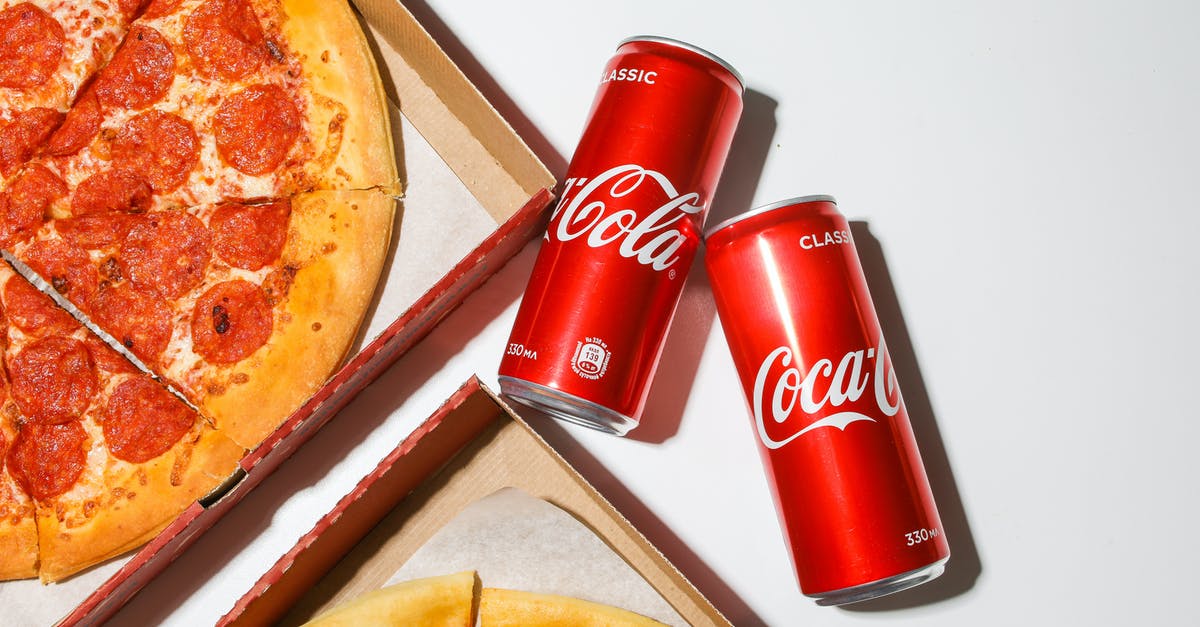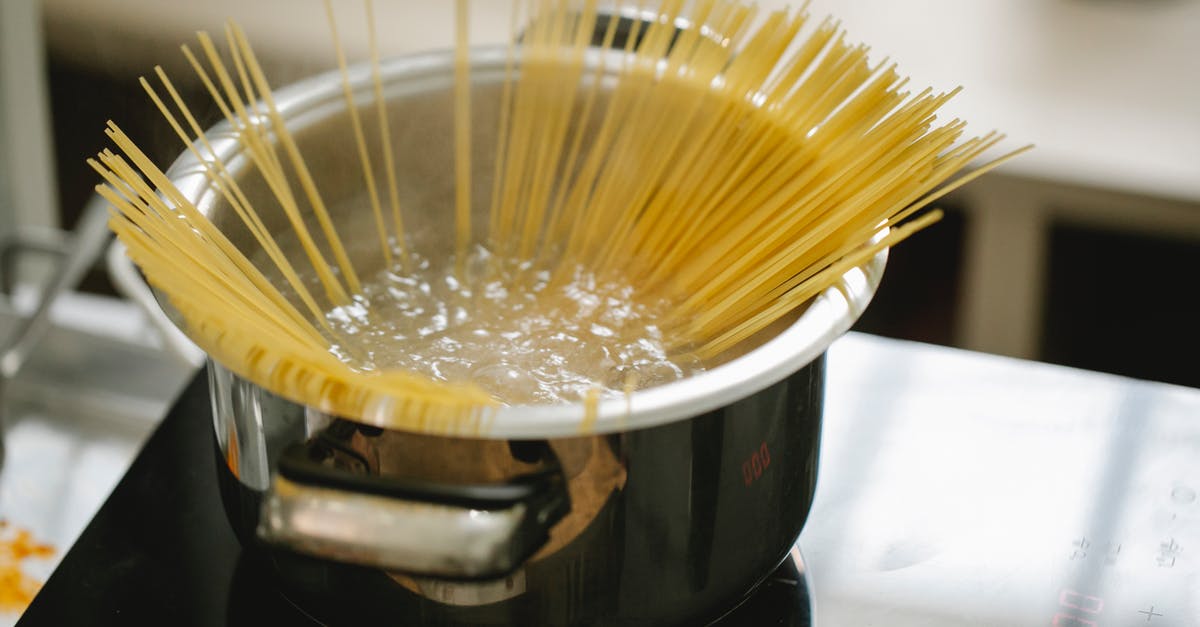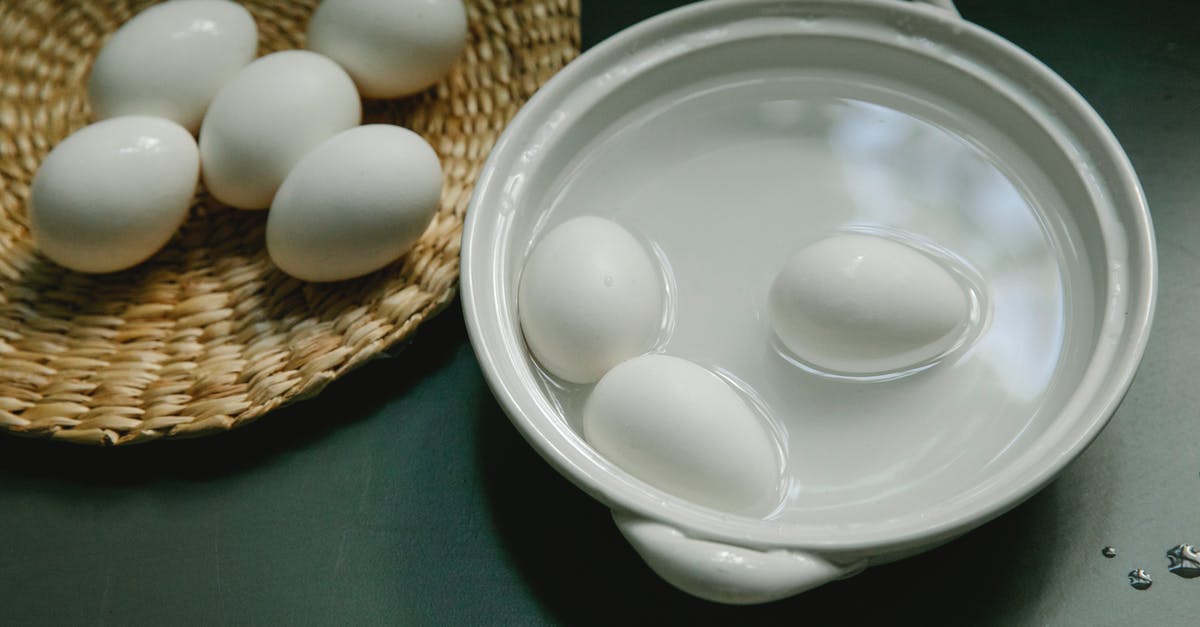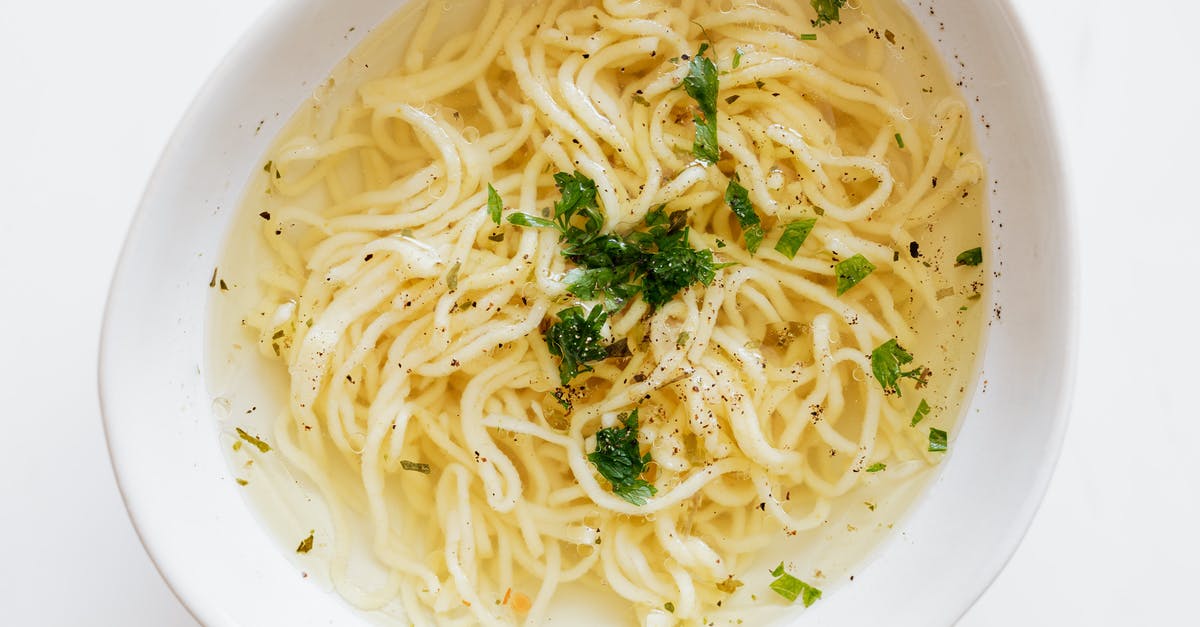Can food be boiled "extra fast/hard" in water?

Once water is boiling you can either leave the heat on quite high, or turn it down a bit so that it just keeps boiling. Apart from extra water vaporating, does this have any effect on the taste of food you're boiling (meat, vegetables, eggs, etc.)?
With just common sense we could get to the following reasoning:
- The liquid water is max 100°C (right?), beyond that it should vaporize (right?)
- Water vapor could be hotter than 100°C (but how much, in normal cooking conditions?)
- When boiling water, the vapor originates at the bottom of the pan
- So technically the foot could be "hit" by this vapor, thus being heated above 100°C
Even if the above reasoning is correct, the questions would still be: would it matter how much you heat boiling water beyond 100°C? Can you significantly change the taste of boiled food by "boiling it really hard" or "boiling it slowly"?
Best Answer
The most obvious thing is nothing to do with heat/temperature. The rapid boil agitates the food a lot, to the point that if the food is soft, it can pretty much tear it apart. You probably don't really want disintegrated food, but smaller pieces do cook faster, so I suppose you can look at this as a rapid boil cooking faster from a certain perspective. It certainly cooks differently.
The other big thing is that rapidly boiling water will recover faster when you add food to it. It's not because the water itself is hotter, but the pot is, and the stove is too if it's electric. So you want a rapid boil to start, even if you don't need it later.
As for heat/temperature, there are differences between a full rolling boil and a slow boil, but not really what you're suggesting.
At a rolling boil, the water is mixing well enough that effectively it's all at 100°C. At a slow boil, it's really only boiling at the bottom, with a few little bubbles floating up from there, so most of the water is actually a bit below 100°C.
This difference is bigger than any effect from steam coming into contact with food; the heat capacity of water is substantially greater than that of steam, the steam isn't under pressure so it won't be above 100°C, and the food will be in contact with water more of the time than steam anyway.
Of course, if all you're doing is boiling water with a relatively small bit of food in it, it doesn't make a huge difference if the water's a little below boiling. But if you've got a lot of food and not that much water, like in a stew, the difference can become way more pronounced. Convection becomes inefficient, so at a simmer or a low boil the heat doesn't propagate from the bottom to the top very efficiently. That lets the temperature at the top be significantly lower, and so things will cook more slowly. Covering the pot does mostly mitigate this, if it's an option.
Finally, the bottom of the pan is substantially hotter than the water, and if you've turned the stove up higher to make it boil faster, it'll be even hotter, so food that comes into contact with it will cook (or more likely, scorch) faster. That's not directly due to the faster boil, of course, just the heat being transferred from the stove to the pot, but they go hand-in-hand.
So yes, things do sometimes cook faster at a rolling boil (what you call "boiling it really hard") than at a slow boil, but it's not because of steam coming into contact with the food, and once it's truly boiling, adding even more heat doesn't really change anything in terms of heat.
Pictures about "Can food be boiled "extra fast/hard" in water?"



Can you cook food in boiling water?
Grains, pasta, beans and other legumes, eggs, vegetables, meat or fish: Most ingredients can be boiled successfully. The key is knowing how long each item takes to cook. Add ingredients to the pot from longest to shortest cook time, so that everything is ready at once.How do you make water boil super fast?
Truth: Hot water boils faster. But it might heat faster if it starts higher. If you're in a hurry, turn your tap to the hottest setting, and fill your pot with that hot tap water. It'll reach boiling a bit faster than cold or lukewarm water. You can also get the water even hotter by using your electric kettle.Does boiling cook faster than simmering?
Knowing the difference A good, fast boil is great for making pastas and blanching vegetables. Simmering, on the other hand, is slower than that nice bubbling boil. It's still very hot\u2014195 to 211\xbaF\u2014but the water in this state isn't moving as quickly and isn't producing as much steam from evaporation.Can You Boil Water Just By Mixing it Really Fast? Water-Stirring Challenge Accepted!
More answers regarding can food be boiled "extra fast/hard" in water?
Answer 2
In my experience, the most likely impact of a gentle boil vs. a furious rolling boil is going to be on texture of starchy foods, such as potatoes or other root vegetables, rather than flavor.
I've found that a gentle simmer of potatoes will result in a mostly intact shape and consistent texture, whereas an aggressive boil without perfect timing can result in the outer layers of the potato breaking apart, sometimes before the center has time to cook fully.
I've seen similar issues with stuffed parcels of pasta like ravioli or boiled won tons. I've also found that open pot egg poached eggs have much nicer results with a gentle simmer than an aggressive boil, perhaps for related reasons.
Since part of how we experience taste is texture, you could say that the "taste" is affected.
Answer 3
At a normal atmospheric pressure, even the steam created by boiling will only be 100°C. However, you will have to worry about the food touching the bottom part of the pan, as that can, and will, get hotter than the water.
So if what you're boiling is suspended or floating then no, it won't be any different.
I figure it's also worth mentioning that if what you're boiling is sensitive to movement (like poaching an egg), then a more rapid boil can effect the structure due to larger, faster, "more violent" bubbles. I don't think it would change the flavor at all though.
Answer 4
The liquid water is max 100°C (right?), beyond that it should vaporize (right?)
Yes, but strictly no. Firstly the boiling point of water depends upon purity and pressure.
The purity factor is argued as a reason for putting salt into water - increasing its boiling point and hence cooking faster. In practice this has negligible effect (a brine strong enough for a wet cure would still only be about 102°C boiling point, so the effect on cooking time of a bit of salt is going to be overwhelmed by the pressure factor).
The pressure factor has two practical effects. One is that if you try camp-cooking high in the mountains, it's harder to cook anything or make a decent cuppa, because the boiling point is so low (okay, not that practical unless you climb very big mountains, but some people do). The other is that pressure cookers cook faster, because of the corresponding effect of using high pressure to raise the boiling point.
Secondly, liquids won't necessarily boil when they reach their boiling point. This has a practical cooking safety effect, in that if liquid is heated in a clean smooth container (hence no nucleation sites) in a microwave it's possible to get it to do this. Such super-heated water has enough latent heat to turn the water into vapour, but hasn't done so. Once you do something that gives it a nucleation site (blow on it, knock it, add something to it), it suddenly flashes into steam splashing steam upwards and boiling water outwards, with enough force to smash the container as well as the obvious scald hazard.
In practice though, barring the superheating case (won't happen in a pan) and half-way normal weather and altitude, then yes, 100°C.
Water vapor could be hotter than 100°C (but how much, in normal cooking conditions?)
Not in this case. It can in the cases mentioned above, but not in normal pan boiling.
As you add heat to water starting at, say, 20°C, that heat will cause the temperature of the water to rise. Each large calorie (kCal, the same sort unit used to measure the energy content of food) absorbed will raise a kilogram of water, 1°C.
Once the water reaches 100°C, yet more heat energy is needed to turn it into steam. This takes around 540kCals per kilogram - much more than the amount needed to raise the water by 1°C. Hence the water remains constant at 100°C for a while, then some of it turns into vapour. Now, it only takes .48kCal to raise vapour by 1°C, but that vapour is going to rise, moving it away from the heat-source and helping distribute the heat energy more evenly throughout the water (which after all, will be cooling elsewhere).
For this reason boiling water will be staying pretty much at an even 100°C (not precisely so, but precisely enough for cooking purposes.
Likewise, while ice can be much colder than 0°C, ice mixed with water will stay around 0°C as the heat absorbed goes into melting the ice rather than heating the water.
When boiling water, the vapor originates at the bottom of the pan
Some flashes near the top, but most does, yes.
So technically the foot could be "hit" by this vapor, thus being heated above 100°C
No for the reason given above. It's worth nothing that when the food is hit by vapour, that vapour contains more heat energy than the water at the same temperature, and while it can't raise the temperature any higher than 100°C, it can theoretically do so more quickly. However, liquid water is a better conductor than vapour water, which mitigates this. In all, this has no effect upon the cooking process, but it does explain both why a steam burn can be much worse than a liquid water burn - it's not normally the potential for vapour being above 100°C, so much as the greater heat energy to transfer - and also why one can put ones hand in domestic steam for longer than in heated water - the poorly conductive steam, mixed with air, is not as good at transferring heat, and hence causing injury, as liquid water is.
In all then, boiling water is 100°C, and this isn't a concern for cooking - if the recipe says to boil it, just boil it. The only real concern is to not let it boil dry.
Answer 5
Point one: No, you can't significantly change the taste of food by choosing different boiling temperatures.
The taste of food depends on the final temperature it reaches. There are certain "turning points" for different types of food. Actin and myosin (the proteins in meat) curdle in the 60°C to 65°C interval for land animals, lower for fish. Different egg proteins curdle in the 50°C to 85°C interval, maybe a bit more, but not above 100°C. Collagen needs at least 68°C to melt, and starches need at least 70°C, depending on the source, but none of them needs above 100°C. All interesting changes happen within an interval below 100°C.
You can change the taste by slow heating, because heat travels by conduction through the food. If you heat a piece of meat at 100°C and wait until the middle has reached 62°C (well done), the outside surface will have reached 100°C and be dry. If you heat it at 62°C (for enough time that even the middle reaches them), the meat will be tasty throughout. The question is whether parts of the food are heated above a limit which makes everything taste bad. There are no such limits above 100°C. So slow boiling (at 100°C, as opposed to slow heating at much lower temperatures) doesn't change anything.
Point two: you can change cooking time by using quicker boil. Starch is unpleasant (raw) below 70°C, but it doesn't have an upper limit at which it gets unpleasant. (Technically, if heated enough, it first breaks down to smaller molecules and then chars, but you can't achieve this with boiling). So, if you use a pressure cooker, which boils food at above 100°C, you can get your starch cooked much sooner, and the taste will be the same as when boiled at 100°C (could have some changes in the aromatics due to easier extraction under pressure but also more breaking down at higher temps).
Point three: Steam won't give you higher temps than boiling water. Steam does pack more energy than liquid water per molecule: the heat energy as well as the vaporization energy. When it hits the under-100°C surface of the food, it condenses, giving up its vaporization energy. But the problem is that it is much, much less dense than water. Even with much more energy per molecule, you get less energy transferred to your food when steaming than when boiling. So steaming heats your food much slower than boiling, and it doesn't heat it to above 100°C unless you use a pressurized environment (and then the things I said above about pressure cooking with water come into play).
So, really, there is no reason to do it. If you want to know what interesting things can be done to food, read about the chefs who do modernist cooking, molecular gastronomy and the like. They are good at it, and have had years of head start to come up with good ideas. If they don't do it, it probably doesn't make sense.
Answer 6
People have mentioned some pertinent things -- the temperature of the water and the bubbles is 100C (correct) the bottom of the pan is higher than 100C (but not so much hotter as to burn paper, which burns at 250C), but very little contact will occur directly between the food and bottom. Another very important factor is covering the pan, as this will reduce the temperature gradient. But one thing not mentioned so far, which is certainly the most important, has to do with the temperature of the interface between the water and the food. As food cooks, these changes (whatever they are) take energy. This lowers the temperature of the morsel, and that needs to come from the water/food interface. This cools the interface, which will remain cooler until heated by conduction (slower) or circulation (faster). So a roiling boil is going to increase recovery of temperature at the interface due to circulation. It is like, standing outside on a cold day, do you get colder with a wind, or without one? This is the same question of replenishment of the interface due to circulation. A roiling boil acts like that wind, circulating the water.
Answer 7
I sometimes use a pressure cooker, which cooks at over 100C and can have much quicker cooking times than conventional cooking. It is not known for adversely affecting the taste of food.
For some dishes it seems to improve the flavor, I'm not sure if this is due to higher temperature, less evaporation, or shorter cooking times.
So I wouldn't worry about boiling point at atmospheric pressure.
See pressure cooking on wikipedia
Answer 8
Simple answer: "There is nothing hotter than boiling" as it was neatly explained to me once.
The boiling point of any liquid is simply the point at which it turns into vapor. It's not going to get any hotter under normal kitchen conditions. Higher heat will just make it evaporate faster.
Jon Hanna's answer to this question is a good explanation of the science behind this.
Answer 9
For pure components the boiling temperature is determined by the pressure and thermodynamic vapor - liquid equilibrium properties of the pure component. Once water reaches boiling, continuing to apply the same amount of heat will not raise the temperature of the water. It will vaporize more water, i.e., convert water (liquid) to water (vapor). But the temperature will not increase.
The food bumping against the wall of the cooking vessel doesn't much matter. In chemical engineering terms the food doesn't "touch" the wall of the vessel but touches a thin layer of the fluid ... a temperature gradient exists across this think layer from the pot/metal temperature to the bulk temperature of the cooking fluid.
It is true that heat transfer will be less efficient (you will waste energy) if the amount of heat applied transferred is too high once you start boiling ... that is because you are in the film boiling regime as opposed to the nucleation regime in which boiling occurs from individual "nucleation sites" on the surface of the vessel .. in film boiling the layer next to the vessel is all vapor which has much poorer convective heat transfer characteristics at the surface than liquid.
Therefore if the pot is already boiling you can turn it down the heat until the boiling rate is just steady not rolling and the food will cook in the same amount of time (at temperature = boiling point of water at atmospheric pressure (around 100C = 212F) but waste less energy in the form of vaporized water going out the range hood exhaust.
Sources: Stack Exchange - This article follows the attribution requirements of Stack Exchange and is licensed under CC BY-SA 3.0.
Images: Polina Tankilevitch, Klaus Nielsen, Klaus Nielsen, Karolina Grabowska
